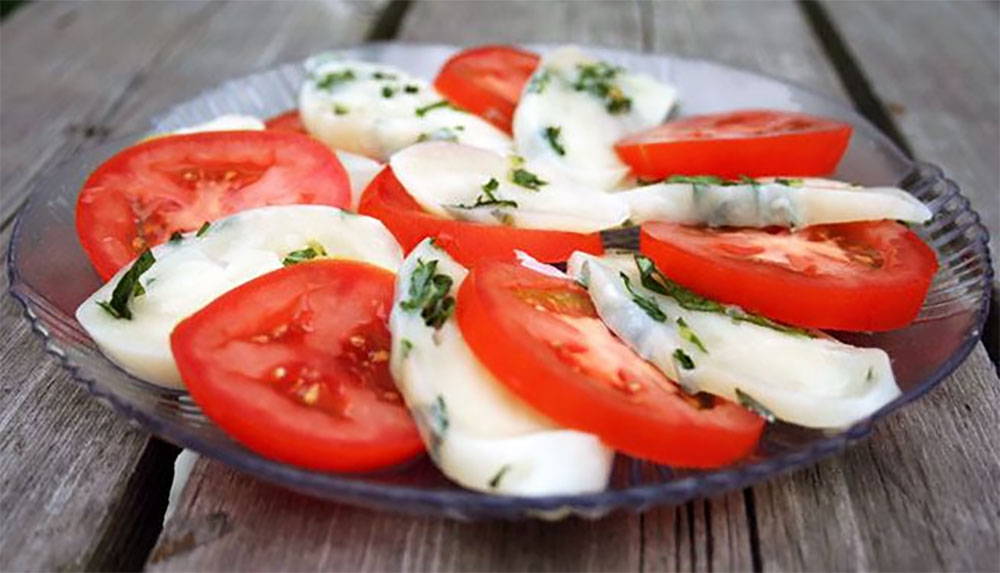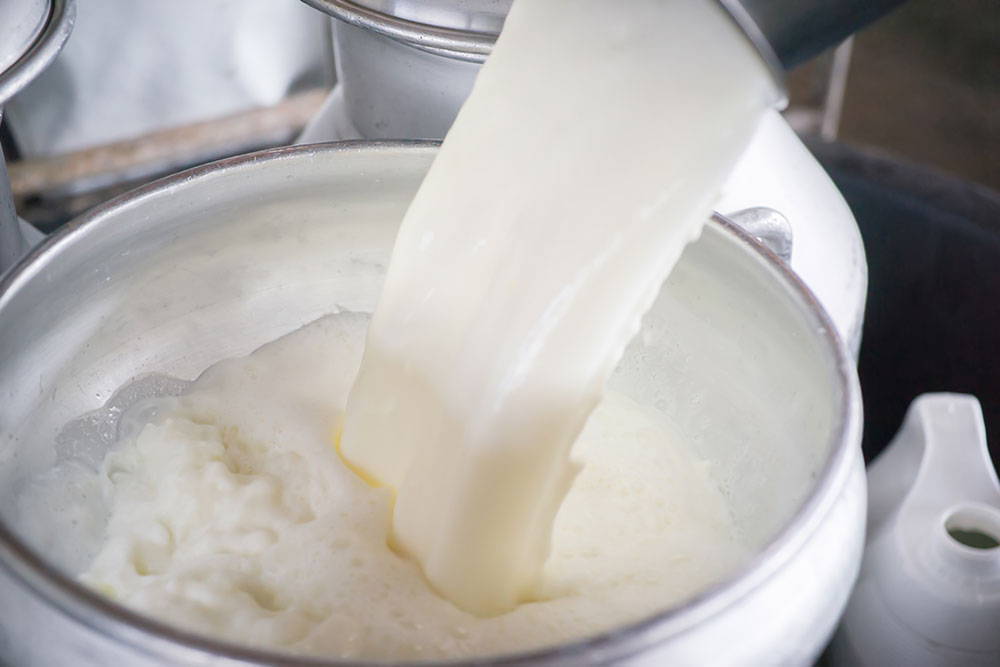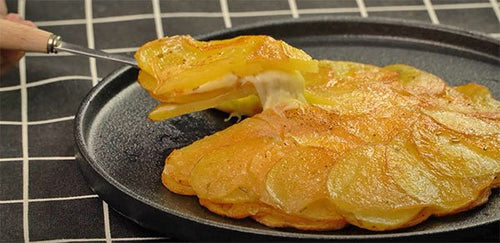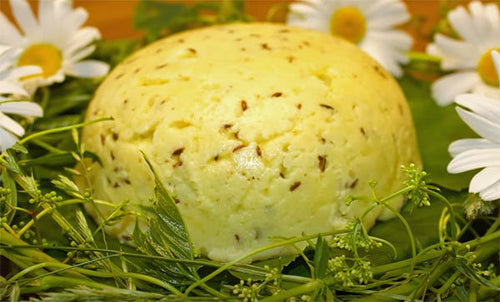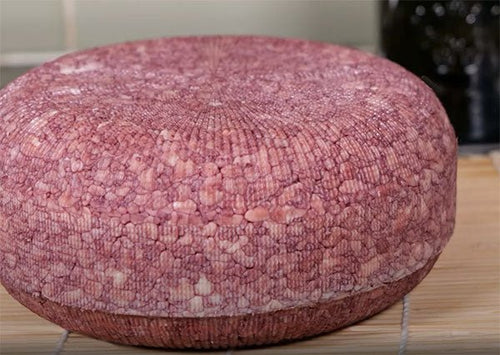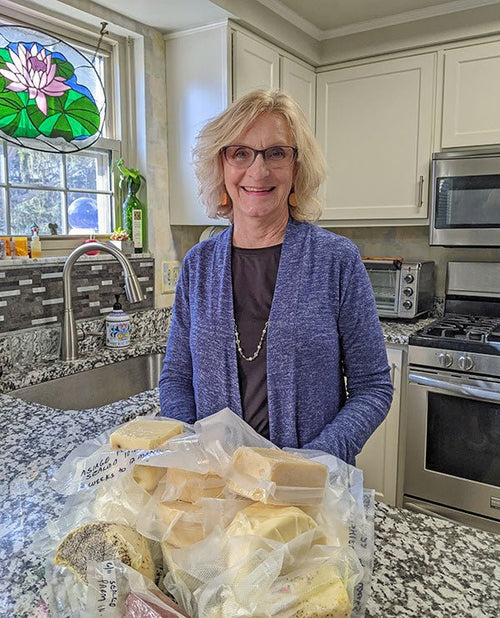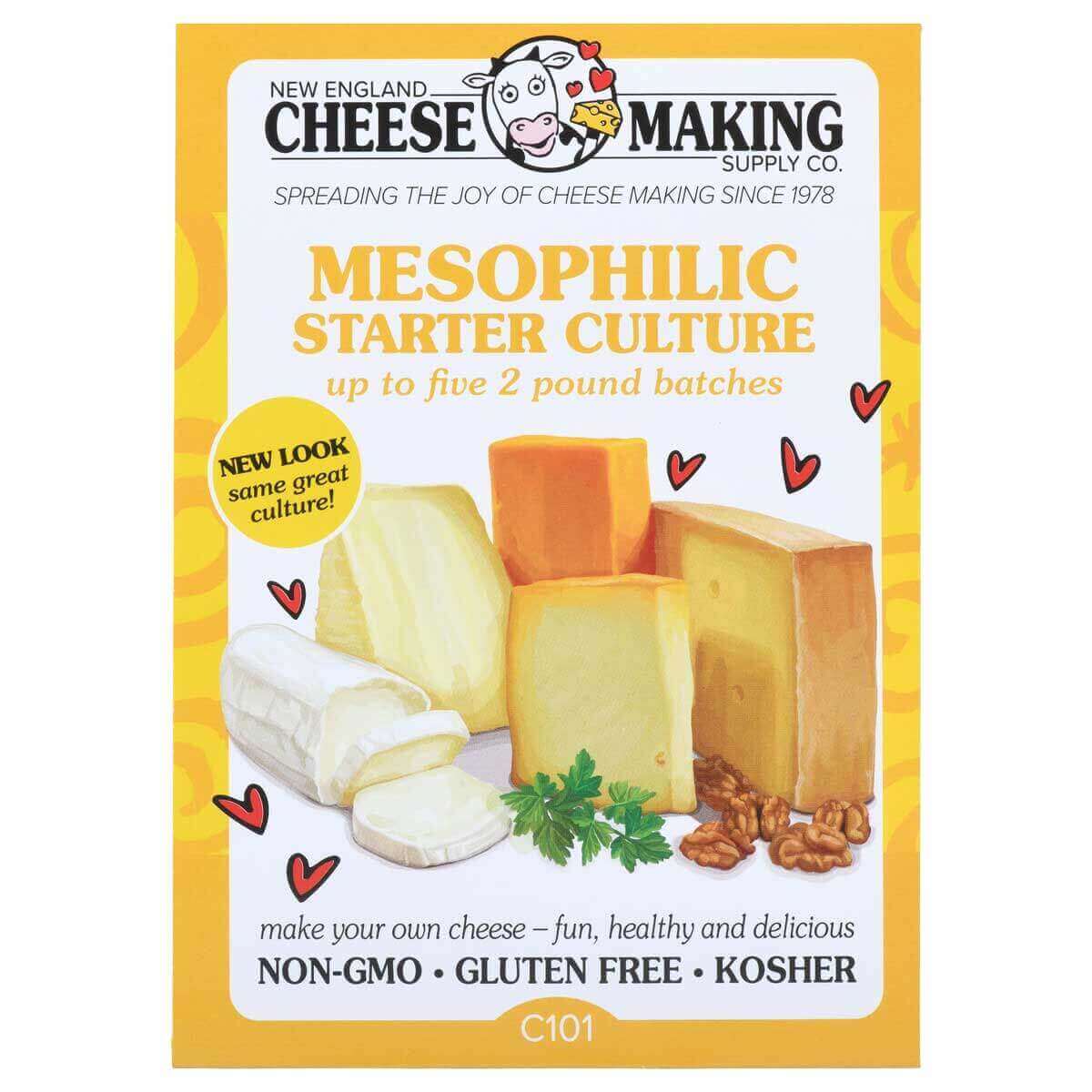This is the most detailed and complete guide for making 30 Minute Mozzarella Cheese at home, including information, tips and suggestions. Ready to have fun making cheese at home, check out our 30 Minute Mozzarella Cheese Making Kit that includes all the supplies and ingredients to make fresh Mozzarella.
General Info
Getting Started
A detailed recipe for making 30 Minute Mozzarella can be found in our Cheese Making Recipes Section, along with a more advanced Cultured Mozzarella Recipe, and 100+ free cheese making recipes.
We also have several blog articles with pictures of the entire Mozzarella making process, including Making Mozzarella with Anya, Age 10 and Brian Dixon on Making Mozzarella in Alaska. We even have a recipe for 30 Minute Burratta.
You may find that your recipe for 30 Minute Mozzarella is slightly different from the one on our website. The reason for this is that milk is being pasteurized at higher and higher temperatures. See our Article on Milk for more information. Keeping up with these changes has been a challenge and it has required us to modify our recipes. We do frequent printings of our written material, but the latest directions are always on our website.
Freeze Rennet Tablets
The rennet tablets, included in our kit, will keep for a year at room temperature. If you put them in the freezer, they will last for 5 or more years.
Kid Friendly
All of the ingredients in the kit are safe for children and women who are pregnant. Obstetricians are sometimes concerned with surface molds and short aging times for cheeses, however, none of that is involved here.
Note: This kit does not contain any dry milk powder so it's safe for anyone with allergies to cow's milk.
Type of Milk
You can use raw milk, pasteurized/homogenized milk (whole, 2%, 1% & skim), goat's & sheep's milk, powdered dry milk with cream, and even water buffalo's milk. Please read the Milk section for more information about choosing your milk.
Equipment
If you don't have a stainless steel pot, you can use Teflon, enamel or anodized aluminum. We do not recommend using regular aluminum because the acids from the whey etch into the metal. With further use, bacteria gets into the holes, and the pot is no longer sanitary.
Halve/Double Recipe
You can cut everything in half, but it is difficult to measure 1/8th rennet tablet (or even 1/8th teaspoon if you are using liquid rennet). To measure 1/8 th tablet, dissolve 1/4 tablet in ½ cup non-chlorinated water and then throw out half of the solution. If you choose to double the recipe, double everything (including the amount of water used to dissolve the rennet and citric acid). When it comes to heating and stretching the curd, separate it into two sections to make it easier to work with.
High Altitudes
No changes are need at high altitudes, because there is nothing to boil in the recipe.
Lipase for Added Flavor
If you wish, add 1/4 teaspoon Mild Lipase Powder (more or less) to your milk after you have thoroughly stirred in the citric acid. If using Lipase, increase the rennet to ½ tablet.
No Calcium Chloride
Normally, calcium chloride is added to all processed or cold stored milk for a firmer curd. However, Mozzarella is the exception. During the stretch, we are releasing calcium, therefore, adding it is counter-productive. We know that many sites include calcium chloride in their Mozzarella recipe, but they may not fully understand the basis of the Mozzarella process.You will get a better stretch and final texture without it.
Non-chlorinated Water
When making cheese, we recomend using non-chlorinated water because it can make rennet ineffective. You can usually call your town water department to find out if your water is chlorinated. If you are unsure, simply use distilled water. Most filters remove 97% of the chlorine, which is fine for cheese making.
Not Lactose Free
Sadly, we have yet to find a brand of lactose-free milk that is not ultra-pasteurized. If you have found one, please let us know and we will add it to our list of good milks. With lactose-free milk that is not ultra-pasteurized, you will be able to make our 30 Minute Mozzarella and Ricotta. If you do make this cheese with regular milk, it will have more lactose in it than the cultured cheeses like Cheddar or Parmesan. The amount will be comparable to the amount of lactose in soft cheeses.
Smoked Mozzarella
For a simple version, some folks add liquid smoke to the milk when making 30 Minute Mozzarella. Add 1 or 2 teaspoons per gallon right after adding the citric acid. (See our blog article- Smoked 30 Minute Mozzarella) If you wish to smoke it the real way, always do a cold smoke. The smoke is usually generated in a separate chamber and then cooled before entering a box with the cheese in it. The temperature must be kept below 84F or the butterfat melts and runs out.
Ingredients
Milk
We recommend using whole cow's milk the first time you make Mozzarella. It isn't necessary, but it will be the easiest way for you to start. If you are buying your milk at the store, look for the most local brand. Be sure it is not labeled UP (ultra-pasteurized). Be especially careful of organic milks, most of the name brands are ultra-pasteurized.
Visit our Good Milk List to find good milk near you.
Adjustments for Milk Types
Raw Milk From a Cow, Goat or Sheep in Late Lactation
Start with 2 teaspoons of citric acid (instead of 1 1/2)
Powdered Dry Milk & Cream
Start with 2 teaspoons of citric acid (instead of 1 1/2)
Powdered Dry Milk & Cream
Start with 2 teaspoons of citric acid (instead of 1 1/2)
Water Buffalo's Milk
Start with 3 1/2 teaspoons of citric acid and 1/8 teaspoon of liquid rennet (or 1/8 tablet)
Note: We have not tried this, because we don't have access to this milk. We are following the advice of one of our customers who has used it.
Adding Cream
When adding cream to whole milk, in an effort to duplicate water buffalo's milk, we recommend using at least 2 teaspoons of citric acid.
Note: We do not recommend replacing more than 8 oz. of whole milk with 8 oz. light cream in one gallon of milk.
Pasteurizing Milk
If you have just pasteurized your milk, you do not have to cool it all the way down, and reheat; simply get it down to 90F and proceed. When making Mozzarella, in the beginning, your milk should be 90F. It doesn't matter if you heat slowly or quickly jsut watch for caramelizing or burning milk solids if heating quickly.
Citric Acid
Citric acid (sometimes referred to as 'sour salt') exists in a variety of fruits and vegetables. It is used as a flavoring and preservative in many juices, soft drinks and seltzers. It is recognized as safe for use by all national and international food regulatory agencies.
What is Citric Acid
Our Citric Acid is made in the US from corn. It is gluten free, non-GMO, does not contain hydrolyzed protein, glutamate or glutamic acid. Glucose syrup from maize is a fermented raw material, but it is not found in the final Citric Acid.
We are working on obtaining Citric Acid that is not corn based, because we know it is better for the environment.
Substitues
We do not recommend using substitues for Citric Acid. There is not a reliable way to know the amount or strength of each ingredient substitue. Citric acid is standardized and has offers the best flavor. If you would like to experiment with lemon juice, or ascorbic acid, keep in mind that your target range is 5.4 – 5.6 pH.
How to Add Citric Acid
The key to adding citric acid to milk is to add it slowly while stirring briskly, this helps to be evenly distributed. Another way is to add citric acid to the pot first, then pour milk in, on top of it before stirring. If the milk starts curdling right after adding citric acid, the citric acid may not have been distributed quickly enough through the milk.
Note: Do not mix citric acid into a small amount of milk before adding to the rest of the milk in the pot, it will result in uneven distribution.
Heated Milk Too High
If you accidentally heated the milk beyond 90F after adding the citric acid, simply cool it down to 90F and proceed.
Rennet
Our vegetable rennet tablets are made with microbial enzymes which contain no animal products. They have no wheat starch or other gluten products. The enzyme is chymosin, the same one in calf rennet. It comes from a mold – mucur miehei. Although the enzyme comes from a mold, there is no mold in the vegetable rennet tablets.
How to Add Rennet to Milk
When adding diluted rennet to milk, stir very slowly while pouring your rennet in. Ideally, stir with an up-and-down motion. Do this for no more than 30 seconds, to get it evenly distributed before the milk begins to set.
Note: If using raw milk, top-stir the milk for a few extra seconds to make sure the milk doesn't separate before the rennet has been evenly distributed.
Cutting Rennet Tablet
You can use a knife to cut rennet tablets. Simply lay the knife on a score mark in the rennet, then give it a quick tap. A pill cutter also works well.
Don't worry if you can't break the tablet into four perfectly equal pieces, simply break it as evenly as you can.
Dissolving Rennet Tablet
If your rennet does not completly disolve that is ok. There is usually a slight amount of residue left in the solution.
Diluted Rennet Shelf Life
Once diluted in water, rennet is only good for approximately 1/2 hour. After 1/2 hour you need to add the rennet to your milk or dispose of it. Do not save or store diluted rennet, it's affectivness will be compromised.
Tablet vs. Liquid
You can use liquid rennet instead of tablets, there will be no difference in the taste of the final cheese. Substitue 1/4 tablet vegetable rennet for 1/2 tsp liquid animal rennet.
Our liquid vegetable rennet is double strength, use 1/8 teaspoon vegetable rennet.
Junket Tablets
Junket is great for making custard, but is nowhere near as strong as rennet tablets for cheese making. Rennet is 80% chymosin and 20% pepsin. Junket is approximately 80% pepsin, so it is much weaker than rennet. It also contains a lot of additives.
Rennet Shelf Life
Rennet tablets will keep at room temperature for up to one year or five when stored in the freezer. There is no need to worry when shipping rennet, it will survive the trip and live for years in the freezer.
Testing Rennet
Heat one cup of milk to 90F. Dissolve ¼ rennet tablet, or ¼ tsp liquid rennet, in 8 oz of cool non-shlorinated water and stir well. From this diluted rennet, take 2 tablespoons and add it to the heated milk. Stir gently from the bottom to the top for 30 seconds. If the rennet is working, the milk surface will begin to firm or form a slight film after two minutes. After six to ten minutes, it will have formed a curd that can hold a knife cut.
Salt
Mozzarella is a mild tasting fresh cheese. Although it is not manditory, adding salt will help enhance the flavor of your finished cheese. If you still prefer to skip the salt, you can try adding fresh or dried herbe to your Mozzarella.
How to Add Salt
We recommend sprinkling salt onto the cheese during the final stretch. This can be awkward, try to have it all measured and ready to go, you can then easily mix it into the cheese when stretching. The same applies to any herbs you might wish to add.
Regular vs. Cheese Salt
If you do not have cheese salt you can use non-iodized sea salt, kosher salt or a salt substitute. If you do not want to add any salt, you can enjoy the Mozzarella as is or add herbs.
Curds
Forming Curds
After adding rennet to your milk, let it set, undisturbed, for 5 minutes.
Then check to see if it makes a 'clean break' when you stick your finger into it. If it has not set, put the top back on your pot and wait another 5 or 10 minutes. At this point, your milk should look like thick custard. When lifted with a spoon, it will hold its shape somewhat but still break easily, like a very soft pudding.
Different Types of Curd
Marginal Curd
Sometimes, if the milk is marginal, the curd will look like cottage cheese floating in the pot. If this happens, heat it to 110F, take it off the burner, cover it and let it set for 5 minutes.
If you can drain your curds (without cheesecloth) there is a good chance you will get Mozzarella, no matter how "different" your curds look. Proceed to the next step in your recipe.
Note: The thermometer will now be restign in the whey, so you are actually measuring the temperature of the whey.
No Curd
If the milk doesn't form any kind of curd, let it set for another 10 minutes. If there is still no curd, drain what you have in buttermuslin, mix in herbs and salt, then enjoy it as a yummy cheese spread.
If the curds did not form, try using a differnt milk next time. To learn more about milk Click Here. The milk you used may not be ultra-pasteurized, but it was probably heated to just short of UP temperatures. This high heat treatment changes the compisition of the milk, which means it will not work for 30 Minute Mozzarella.
Store Bought vs Raw Milk Curd
After a good curd has formed, heat it to 105F, (110F if you will be using the water bath method) stirring only enough to keep the pieces of curd from sticking to the pot. As you are stirring the curds and heating them up, they will expel whey and become firmer.
This step may not be in your recipe. We recently added it to the recipe because many cheese makers were having problems with store bought milk.
Note: When using raw or very fresh milk, you may not have to heat the curds back up. If your curd seems to be perfect (soft and custard-like), cut it and put the pot back on the stove without any heat.
No Solid Curd
If there are no solid curds, drain what you have in buttermuslin, mix in herbs and salt, then enjoy it as a yummy cheese spread.
Ultra-pasteurized milk is heated so high during pasteurization that the structure of the milk proteins are damaged.
Some milk processors are heating their milk well beyond the normal temps, up to 170-180F, just short of ultra-pasteurization. This, along with long transit times and cold storage, is causing problems in our milk supply. Sometimes curds look fine, but they dissolve later in the process, when heating or stretching. This is also a result of overheated milk. If you think your milk has been overheated, try purchasing fresh local milk. We are keeping a list of good milks which is composed of brands recommended from cheese makers all over the world.
Curd Sunk in Pot
After adding the rennet, did your milk turn into a big glob of curd at the bottom of the pot. This is caused by milk that is overly acidic. Proceed directly to the microwave or water bath step in your recipe. Next time, try heating the milk to only 86-88F before adding rennet. This will form a curd that can retain more moisture. The point where the curds begin to stick and get stringy is an indication that the curds are almost ready to stretch. Your final moisture will be determined by heating the curds in the next step and how long you stretch the cheese.
Curd with Milk Underneath
This may be a problem with localized coagulation. The citric acid may not have been distributed quickly enough through the milk so some of the milk will be overly acidic and coagulate immediately. If this is the case, dilute the citric acid in more water, one cup, on your next attempt. You can also try adding the citric acid solution to the pot, then pour the milk over it and stir well.
With problematic milks, we usually add 1 1/2 tsp citric acid to 1 cup of cool, non-chlorinated water. Then, we add the acid solution slowly while quickly stirring it into the milk.
Local Milk But No Curd
You might have stirred the milk too long after adding rennet. With today's milk, stirring 30 seconds after adding rennet will be plenty, with a few more seconds of top-stirring when using raw milk. Make sure to take your pot off the burner and let it sit quietly while the curd forms. If you do this, a nice firm curd will form. If you continue stirring after this point, you are actually cutting the curd as you stir, resulting in a weak curd.
Next time, try this: Add rennet at 100F instead of 97F. Let it set for about 10 minutes, off the burner, then cut the curd surface into 1/2-1" cubes, give the pan a twist to separate the curds, and let this set for another 5-8 minutes. Now, put the pot back on medium heat and begin cutting the large pieces of curd crosswise with a spoon. Stir from the bottom as you raise the heat to 105-107F. Watch the temperature and continue stirring gently from the bottom up, trying not to break the curds too much. The curds should become firm enough to ladle into a bowl after 5-8 minutes of stirring. If they break up at this point you should find another milk source. If the curds are firm, carry on with the rest of the draining and microwave or water bath steps. This process may take longer than 30 minutes, but that is because we are working with excessive pasteurization temperatures.
Milky Whey
It is normal for whey to be somewhat milky, especially with high butterfat milk. However, there may have been some loss of butterfat due to an incomplete, soft curd set or excessive curd handling. The next time you make Mozzarella, try to get a firmer curd by setting the milk at a temperature 3-5 degrees higher. Then, stir a few minutes longer when you heat it to 105F.
Soft Curd From Older Milk
Sometimes the age of the milk is a factor. You want milk to be as fresh as possible. Try adding a little more rennet, 1/2 tablet next time.
Storing Curds For Later
You can freeze curds and stretch them later, simply wrap them well with no air. When you are ready, thaw curds in the refrigerator.
Here is an interesting tip we recieved from one of our customers using goat milk
“I've been making Mozzarella for years, this year I made a mistake that worked out beautifully. For those who want to explore different flavors, making cultured mozzarella offers a unique experience, as this method enhances the cheeses taste profile through the use of specific bacterial cultures. I made Mozzarella in the normal way, right up to adding rennet and waiting for the curd to set. I was called outside and couldn't come back in for almost 2 hours. The curd had knitted on the bottom of the pan but was still very soft, almost like there was not enough rennet to give me a clean break. I thought I'd just try to finish it, I turned the lump of curd to break it twice and left it alone for a few minutes. Then, I drained the curd for 10-15 minutes and put the curd in the fridge as I had to go outside again. The next day, I stretched it and it was wonderful. So now I bypass cutting the curd, after I add rennet I simply leave it alone and let it do its thing, off the heat, in the pot for 2-3 hours, drain it, put it in refrigerator until the next day and stretch.”
Stretching Curds
The temperature of the curd is important in the stretching phase. The heat needs to raise the internal temperature of the curds to 135F before a stretch can happen. If it the curds get much hotter, they will melt and come apart. If your water bath or microwave is too hot, over 175F, your curd may dissolve.
How to Stretch Curds
You want to stretch your cheese in a similaur manor as pulling taffy. Let it fall on itself a few times until it all seems smooth and shiny. Shape it into a ball and drop into a bowl of iced cold water. If you want to make Bocconcini, while stretching, break the cheese off into lismall pieces and plunge them into ice water.
When cool, you can wrap your cheese and refrigerate, to store it. If adding vegetables, such as tomatoes, cut them into tiny pieces and let dry slightly before adding them to your cheese.
Kneading cheese like bread during the stretching phase will result in too much moisture loss, making cheese tough and chewy.
Curds Crumbled After Microwave
If your microwave is too strong, or you heat the curds too long, they can fall apart. Try microwaving for less time, start with 30 seconds, then another 30 seconds, two rounds might be enough.
Curds Dissolved After Microwaving
This can happen when the curds are not strong enough. If you followed the directions, including cutting the curds and reheating to 105F, the problem may be the milk. If you are sure the milk has not been overheated and is not too old, try using ½ tablet rennet next time.
You can use these curds like a Ricotta, or simply add herbs and spices.
Low Yield After Stretching
If using milk with less butterfat, your yield will be low. Or, if your curds were not firm enough, you may have lost butterfat to the whey.
Another thing to notice is the amount of cream in your whey. Let the curds set until the whey is clear, both before and after cutting the curds. If the curds need more time to form at any point, give them 5 or 10 more minutes.
Finished Mozzarella
Storing Mozzarella
Mozzarella is traditionally a fresh cheese eaten within a day or so. When you have a moist mozzarella the lactose will continue to ferment, if stored too long it will not hold its shape and may become sour or off tasting.
If you want to store your mozzarella for longer 1-2 days, cut the curd smaller, stir longer before the stretching phase. This will produce a drier cheese with less lactose.
Mozzarella is Too Soft
There are many steps you can take. Increase rennet to ½ tablet. Raise the temperatures a few degrees. Cut the curds smaller and stir them longer after reheating. Stretch the curds more. Any or all of these steps will result in a drier cheese. Or, you can partially freeze your soft Mozzarella and then grate it.
Mozzarella is Dry and Rubbery
There are many steps you can take to achieve a softer cheese. You may have stretched the curds too much. Simply let the cheese fall on its self a few times and put it in your container. It loses a lot of moisture during the stretching process. If it is still too dry, next time, add the rennet at a temperature 2-5 degrees lower and do less cutting and stirring before the stretching stage.
Mozzarella Will Not Melt
You should be able to make a good melting Mozzarella using this recipe. Try keeping more moisture in the cheese by kneading and stretching less. You can also lower the temperature 2-3 degrees before adding rennet and when you reheat the curds after cutting.
Do Not Store in Water or Brine
Why can't I store my Mozzarella in water like they do at the store?
30 minute Mozzarella can become slimy because of too much calcium loss when stored in water or brine.
Translucent After Storing
Using skim, 1%, or 2% milk can cause Mozzarella to be translucent, the white color is from butterfat.
What To Do With Whey
Whey contains lactose, protein, vitamins, and minerals along with traces of fat. Because it digests very rapidly, the amino acids enter the blood stream faster than other protein sources. For this reason, athletes often consume commercial whey protein shakes after workouts to help them gain muscle mass. Some people like to soak their grains and beans in whey. Others make it into lemonade by filtering it and adding sweetener. It may also be used as soup stock or to replace liquids in recipes. Acid loving plants such as tomatoes thrive on whey. At the very least, you can compost it. It will keep up to a week in the refrigerator and it may be frozen.






























